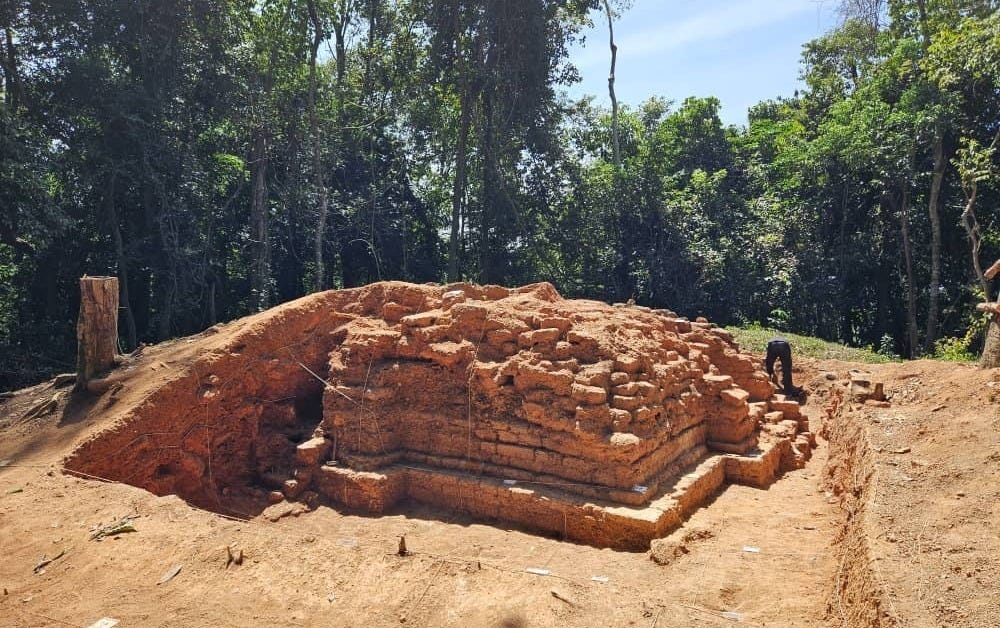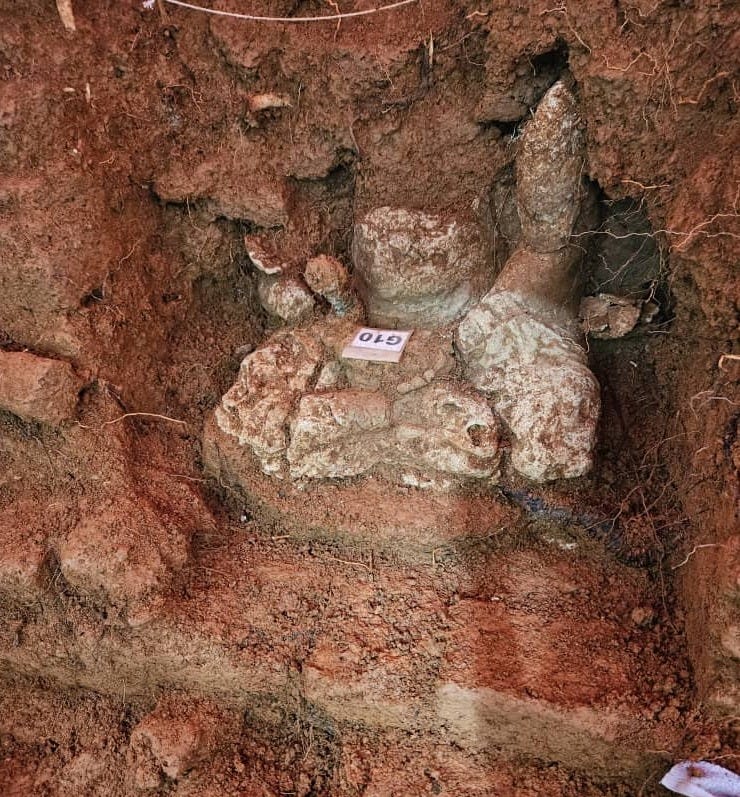
ONE of the most significant discoveries made by associate professor Dr Nasha Rodziadi Khaw and his team occurred at Bukit Choras, located in the Yan district of Kedah. During their excavations, they unearthed the remains of an ancient Buddhist stupa on a prominent hilltop, a find that has shed new light on the region’s early religious and cultural landscape.
What makes this stupa particularly fascinating is its clear South Asian and Southeast Asian architectural and iconographic elements, suggesting a strong interconnectivity between local communities with foreign artisans and Indian influence that once permeated the area.
The stupa — typically a hemispherical structure containing relics and used as a place of meditation — is a central architectural form in Buddhist religious practice. The one found at Bukit Choras includes decorative motifs and structural features that closely resemble those found in ancient Indonesian, Thailand, Indian, and Sri Lankan Buddhist sites. These include lotus petal designs, carved railings, and certain stylistic approaches to the base and dome that align with Gupta-period (Circa 4th–6th century C.E.) and Post-Gupta period (Circa 7th-9th Century C.E.), artistic traditions from the Indian subcontinent. Similar features are also seen in sites found in Muarajambi and Batu Jaya from the Srivijayan period, as well as sites in Lower Chao Phraya River of the Dvaravati period.
The near-complete, life-size Buddha figure in a meditative position inside the temple, is located north of Gunung Jerai in Kedah.
Nasha’s team is also working to salvage two other relics, also believed to be Buddha figures. These figures may be broken and damaged with missing heads. Nasha believes there is a fourth relic hidden within the temple structures.
##CROSSOVER: Click here to read our story, Unearthing the forgotten civilisation of Lembah Bujang at www.newasiacurrents.com
“Finding it on an elevated hill suggests both religious sophistication and strong regional connectivity,” notes Nasha. The placement of religious monuments on hills is a well-documented practice in ancient Buddhist architecture. In both India and Southeast Asia, high ground was often chosen for its symbolic closeness to the heavens and its visibility from afar, serving as a beacon of spiritual presence and authority. The Bukit Choras stupa’s prominent location would have made it visible to travellers arriving via maritime routes, especially given Kedah’s historical role as a key entrepôt in early trans-Asian trade.
A cultural and economic bridge
In ancient times, Kedah — known historically as Kadaram in Tamil and Kataha in Sanskrit — was a thriving port-polity situated along the Straits of Malacca. It served as a cultural and economic bridge between the Indian subcontinent, Middle East, China and the broader Southeast Asian archipelago.
Maritime Silk Road trade routes brought merchants, artisans, monks, and missionaries to its shores, many of whom introduced Hindu and Buddhist ideas, practices, and art forms to the local population. The discovery at Bukit Choras reinforces this narrative, offering tangible evidence that Kedah was not merely a passive recipient but an active participant in the spread and adaptation of Indianised cultural forms.

A spiritual centre
The site also hints at the presence of a once-thriving religious community. The remains of what appear to be surrounding monastic quarters and votive stupas suggest that Bukit Choras may have functioned as a spiritual centre for local and visiting Buddhists. While many such hilltop sites across the region have been lost to time, overgrowth, or repurposing, the relative preservation of Bukit Choras offers a rare and valuable window into the spiritual geography of ancient Kedah.
##CROSSOVER: Click here to read our story, Preserving the past, shaping the future for Lembah Bujang, on Postscript NAC
Moreover, the iconographic details help scholars trace cultural transmission paths and the specific sectarian influences present in ancient Kedah. Some of the symbols suggest Mahayana affiliations, while others could point to earlier Theravāda practices. This diversity speaks to the complex religious environment of the region, where different strands of Buddhist thought likely coexisted and evolved alongside local beliefs.
In sum, the Bukit Choras discovery represents more than just an isolated religious monument — it is a keystone in understanding the broader historical interplay between Southeast Asia and South Asia. It affirms that ancient Kedah was both a spiritual hub and a crossroads of ideas, with hilltop stupas like the one at Bukit Choras serving as both sacred sites and cultural signposts in a highly connected ancient world. - Sebastian Lim
All articles, opinions, and events featured in PostScript NAC represent the views of the interviewees, individual writers and contributors, and do not necessarily reflect those of PostScript NAC. While we strive to ensure all information on this post is accurate, complete, and current, PostScript NAC is not responsible for any errors, omissions, or outdated content.




